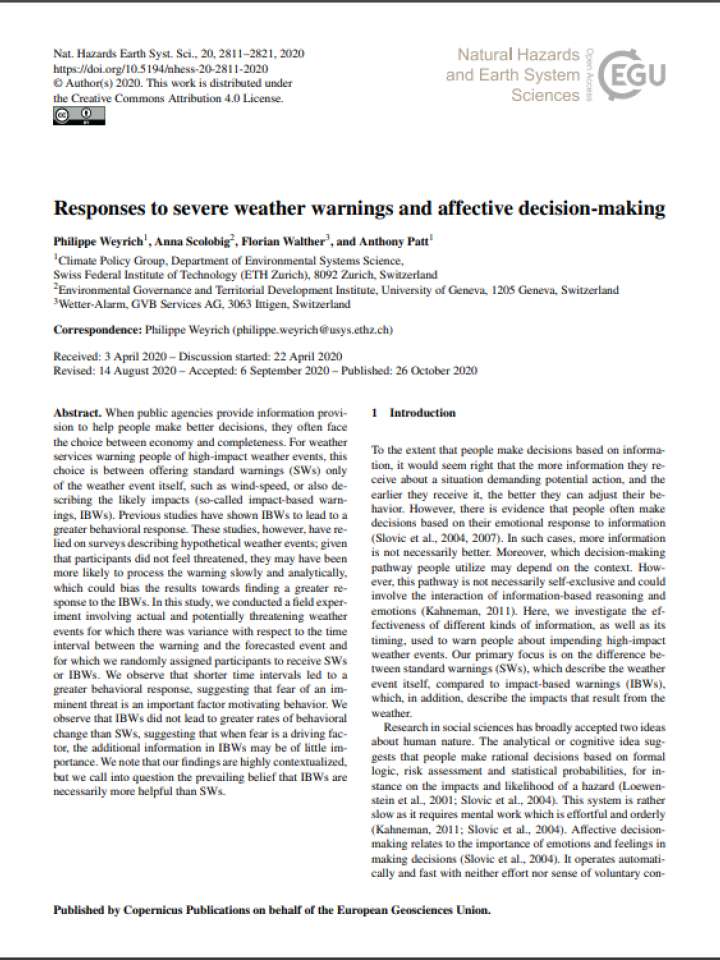Responses to severe weather warnings and affective decision-making
This study compares the effectiveness of two early warning methods: standard warnings (SWs) that only describes the weather event itself, such as wind-speed, and impact-based warnings, (IBWs) that also describe the likely impacts of the wearher event.
A field experiment involving actual and potentially threatening weather events was conducted with time interval between the warning and the forecasted event as well as randomly assigned participants.
It is observed that:
- shorter time intervals led to a greater behavioral response, suggesting that fear of an imminent threat is an important factor motivating behavior.
- BWs did not lead to greater rates of behavioral change than SWs, suggesting that when fear is a driving factor, the additional information in IBWs may be of little importance.
Please note that these findings are highly contextualized, but still call into question the prevailing belief that IBWs are necessarily more helpful than SWs.
Explore further
